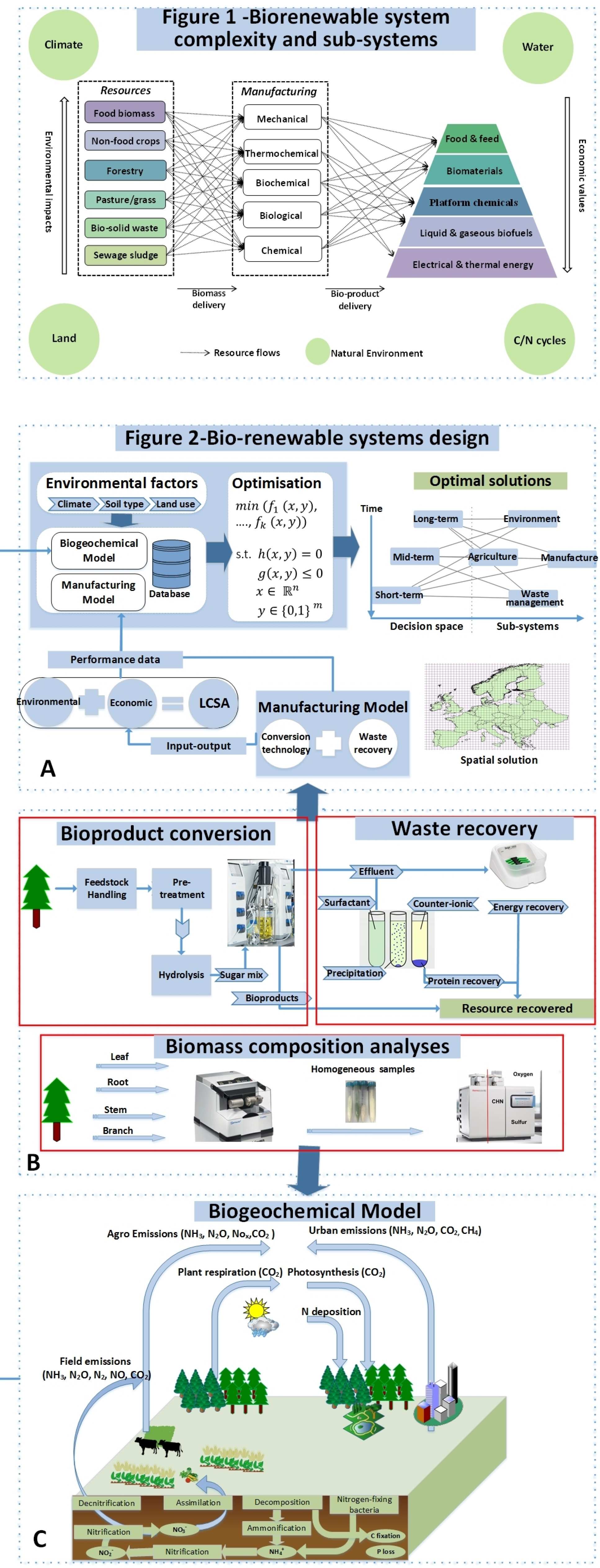Research Background and Methods
Background: Driven by environmental challenges, a transition from fossil-based to a bio-economy is evolving progressively. The bio-economy is underpinned by the production of biological resources (biomass) and the conversion of these resources and waste into bio-products (i.e. biorenewable), including bio-energy, biochemical, bioplastics, feed, which are often co-produced. However, the translation of fundamental research into sustainable solutions across the energy and biorenewable sectors is hindered by the system complexity and fragmented sub-systems (Fig-1). The system complexity spans from interconnection between resources, manufacturing and environmental factors to the conflict between sustainability criteria. Biorenewable sub-systems include natural environment, agriculture, manufacturing and waste management. These subsystems are underpinned by carbon and nitrogen (C/N) cycles including the plant-land-climate biogeochemical cycles, and biomass molecules conversion into biorenewables. Despite the Science-Engineering advances, major challenges on how to tackle system complexity and achieve sustainable design across biorenewable sub-systems still remain.
Research Development: An approach has been developed to incorporate the technology development within an overarching modelling framework (Fig-2A) that integrates the fragmented sub-systems. This research integrates several components -
- Empirical work (Fig-2B) includes biomass compositional analyses and closed-loop biorenewable conversion from biomass/waste;
- An validated biogeochemical model (Fig-2C) simulates the C/N transport and transformation across plant-soil-climate and computes biomass growth;
- Manufacturing simulation model and life cycle sustainability assessment (LCSA) quantify the techno-economic and environmental performances;
- Mathematical modelling (Fig-2A) integrates the biogeochemical and manufacturing simulation, LCSA, and empirical data with multi-objective optimisation. Multi-objective optimisation accounts for spatial-temporal decision spaces and optimises economic and environmental performances across sub-systems.
Collaborating with industrial pioneers, the capability of this approach has been tested in bio-renewable applications, ranging from manufacturing to supply chain design.



